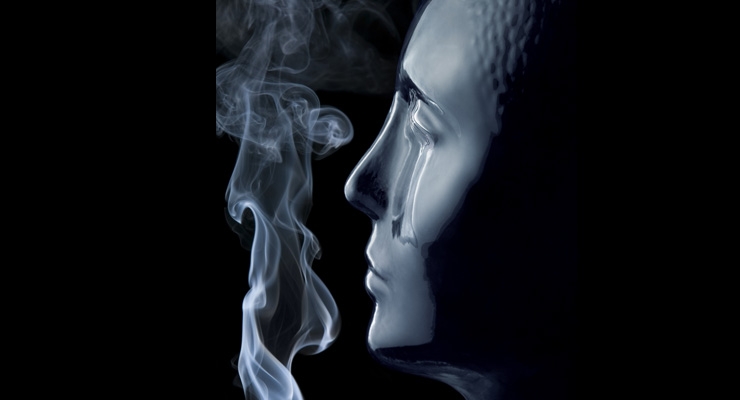Harnessing AI
“AI is one tool in a toolbox,” stated Dr Alex Wiltschko, senior research scientist for Google Brain, where he leads an olfaction-based machine learning team.
He described how Google is using AI across all of its products, such as Google Search, YouTube, Photos, Maps and Gmail, and that it is giving its programs away for free, which are used by organizations, such as ebay and Uber. The idea behind using AI technology and machine learning is to make tasks easier.
“AI is the science of making things smart, while machine learning is about teaching computers to learn without having to program in rules,” explained Wiltschko. “Although the technology has been around for a long time, we didn’t have the power and human insights to put it into practice. Now, we can compute human creativity combined with other approaches.”
Wiltschko explained that AI and ML have a lot to offer the fragrance industry, but that it should not be viewed as a replacement for human creativity. For example, within the area of molecule adaptation, AI and ML can be used to tweak formulations by identifying molecules that can reduce skin irritation, or to improve biodegradability or as a cheaper alternative to more expensive ingredients. It can also help to break down potential barriers by translating text formulations from one language to another.
“By taking raw text, we can refine and tweak it and thereby help perfumer productivity,” he maintained.
Furthermore, AI and ML can be used to predict what a substance smells like, add descriptors, such as grass, sweaty, ammonia; and even help measure toxicity.
Josh Silverman is CEO of Aromyx, a biotechnology company in the field of digitization of smell and taste. Aromyx uses biological receptors in engineered biosensors to create digital representations of smell sensory data. From a trillion different odors, these receptors work in exactly the same way as the 402 human olfactory receptors that tell us what we are smelling. Aromyx sensors have been used by customers to differentiate between fresh and spoiled lemon juice and to test for malodor differences in recycled versus non-recycled plastics.
By using color as a model for olfaction, Silverman explained how the receptors in the eyes are similar to those in the olfactory system and can distinguish a million different colors.
“Our hypothesis is that odor/flavor perception can be structured in the same way as color,” he said.
An Aromyx app is in development to help standardize the language of fragrance based on algorithms that can help fragrance creators understand subtle differences in interpretation. Dr Silverman’s goal is to make this app public.
Givaudan has developed Carto, an AI-powered tool that brings science and technology together for the benefit of its perfumers.
“Givaudan is pioneering in the field of digital and analytics applied to the fragrance world,” explained Valerie Drobac, digital innovations manager, Givaudan. “Used to develop new ideas and concepts as well as for ingredients, Carto can help perfumers create a better product.”
For example, perfumers can automatically adjust ingredients to maximize the performance of a product.
Comparing Inter-Species Responses
Professor Thomas Nowotney, University of Sussex, spoke on the odor object recognition lessons learned from the olfactory system of insects. His research project revealed that olfactory receptors are surprisingly similar across species, despite the fact that insects “smell” through their antennae. His study examined the problem of how humans differentiate between smells at one time, such as coffee and bacon.
“It’s similar to the ‘cocktail party problem,’ where there is sound all around but the brain can assimilate it and help us understand individual sounds,” he explained.
By studying responses in bees, Nowotney could extrapolate information on how bees can differentiate between smells.
“We are very excited about this data and are looking at the brain for inspiration for other AI applications.”
Using Scent Makes (self)Driving Safer
The role of scent in making self-driving cars safer was explored by Dr Dmitrijs Dmitrenko from the Sussex Computer Human (SCHI) Laboratory at the University of Sussex. Currently, audio-visual stimuli are used to alert drivers to dangers, but they are not always effective, maintained Dmitrenko.
“Research shows that auditory stimuli can be distracting when driving: 23% of drivers get annoyed by constant auditory alerts and 61% of these will disable them.”
He said that the most efficient stimuli are multi-modal.
“If smell monitors something in the car that isn’t right, this could be useful,” said Dmitrenko.
He studied the effects of using scents as alerts, such as notifying the driver if they are driving over the speed limit or are changing lanes without indicating.
“When scent is used in connection with other cues, drivers make fewer mistakes. They feel less distracted and more comfortable,” he observed. Another finding suggested that scent delivered to the driver ten seconds before an event helps them feel differently and changes their driving behavior.
The Future of AI in Fragrance: Friend or Foe?
The final session brought the panelists together. While recognizing the tremendous benefits AI can bring to fragrance, concerns remain that it could hamper creativity.
Will Givaudan ever create a fragrance solely by AI? Drobac was adamant that perfumers will always be involved in the creative process. The rest of the panel members regarded AI not as a threat, but a tool to help perfumers design things better. However, some delegates needed further convincing—their concern is that AI could undermine the customer experience, particularly when engaging with an authentic artisan fragrance experience.
Source: Scent & AI – HAPPI













